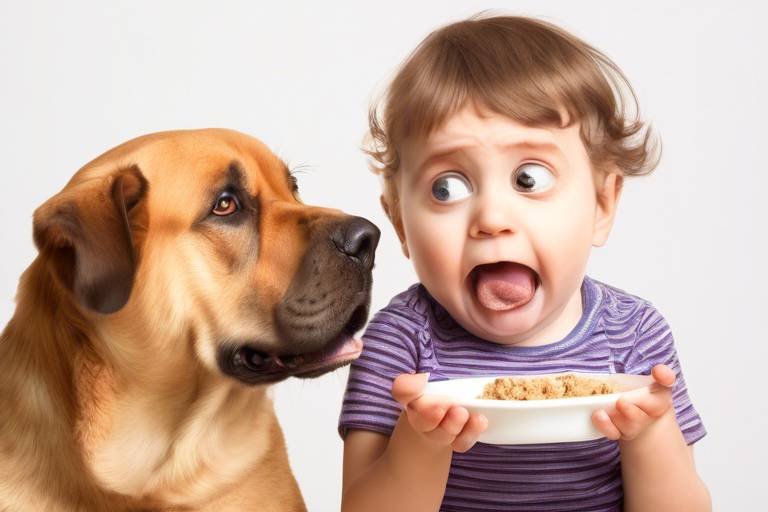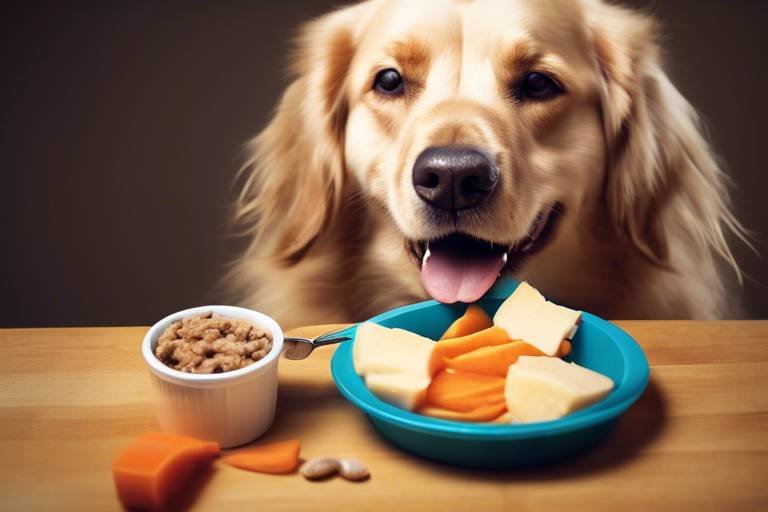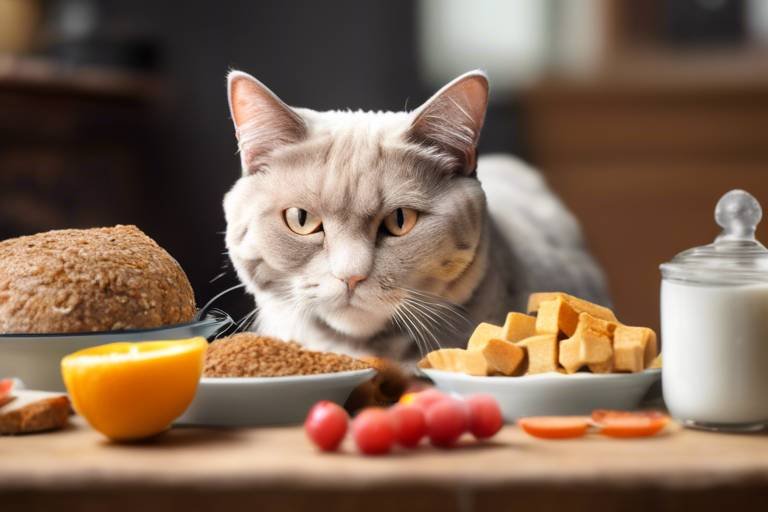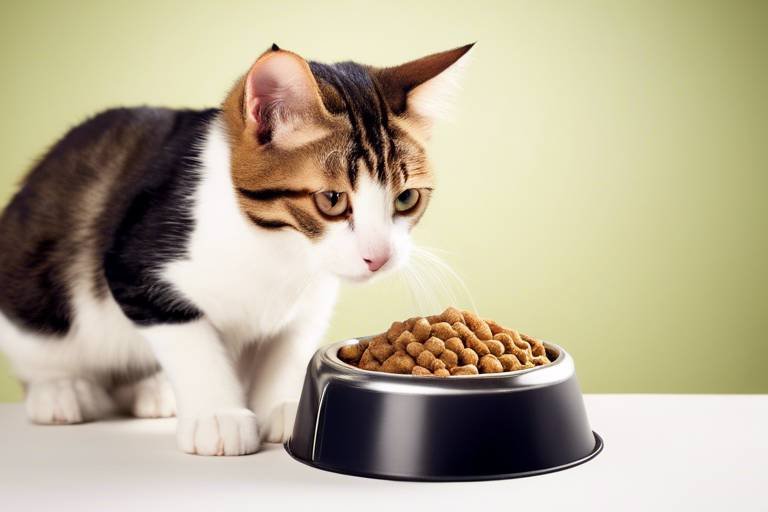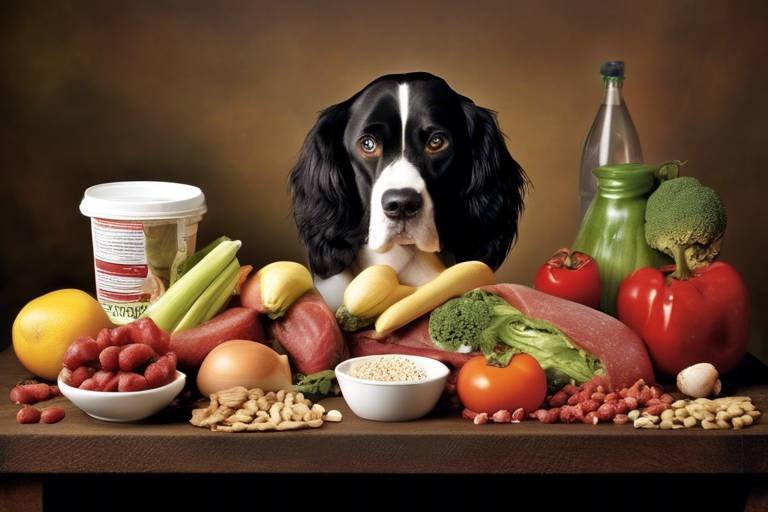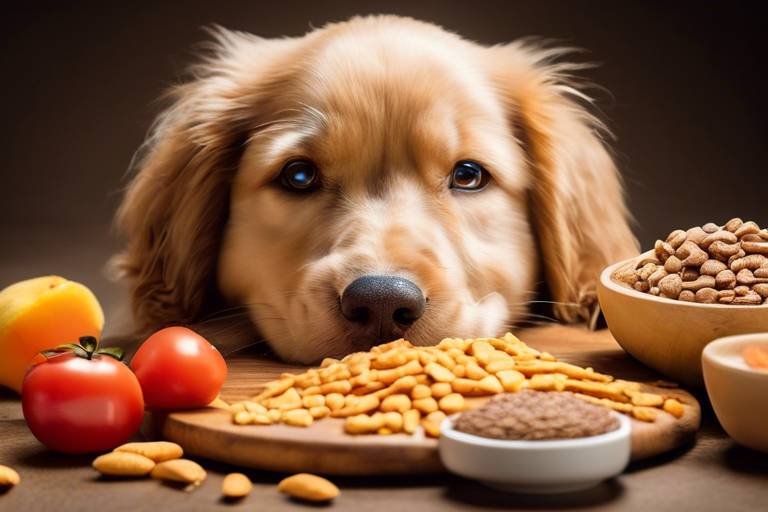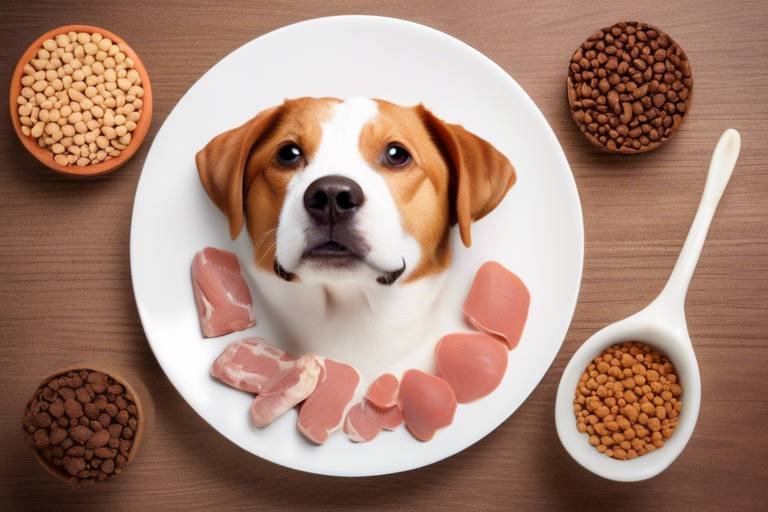The Benefits of Grain-Free Dog Food - Is It Right for Your Pet?
As a loving pet owner, you want nothing but the best for your furry friend. Have you ever considered how their diet might impact their overall health and happiness? Grain-free dog food has become a hot topic in the pet food industry, and for good reason. Many pet parents are making the switch to grain-free options, believing they can offer better nutrition and health benefits for their dogs. But what exactly is grain-free dog food, and is it the right choice for your pet? In this article, we'll explore the ins and outs of grain-free diets, the potential benefits they offer, and some important considerations to keep in mind before making the change.
So, what does it mean when we say "grain-free"? Essentially, grain-free dog food eliminates traditional grains like wheat, corn, and soy, which are commonly used in many dog foods. Instead, these diets focus on high-quality protein sources such as meat, fish, and legumes. This shift in ingredients has gained popularity among dog owners who are keen on providing their pets with a more natural, nutrient-dense diet. Think of it as a return to the basics—just like how our ancestors thrived on whole foods, dogs can also benefit from a diet that mirrors their natural eating habits.
Now that we've covered what grain-free dog food is, let's dive into the potential health benefits it can offer your canine companion. Many pet owners report noticeable improvements in their dogs' health after switching to a grain-free diet. Here are some of the key benefits:
Have you ever noticed your dog struggling with digestive issues? Many dogs experience discomfort from grain-based diets, which can lead to bloating, gas, and irregular bowel movements. By switching to a grain-free option, you might find that your pup enjoys better digestion and nutrient absorption. Grain-free foods are often easier on the stomach, allowing your dog to thrive and feel more comfortable. Just like how we feel better when we eat whole, unprocessed foods, your dog can benefit similarly from a more natural diet.
Food allergies can be a real pain for both dogs and their owners. If your dog has sensitive skin or suffers from frequent itching, it might be time to consider a grain-free diet. By eliminating grains, you could significantly reduce the chances of allergic reactions. Many pet owners report improvements in their dog's skin and coat health after making the switch. It's like giving your dog a fresh start—free from the irritants that might be causing them discomfort.
Have you ever watched your dog race around the yard, full of energy and life? A grain-free diet can help boost those energy levels even further. By providing your dog with a protein-rich diet, you're fueling their body with the nutrients they need to be active and playful. Imagine how much more fun your daily walks or playtime can be when your dog has the energy to keep up with you!
Before you rush out to buy grain-free dog food, there are a few important factors to consider. Not every dog will thrive on a grain-free diet, and it's crucial to evaluate your pet's specific needs. For example, some dogs may have unique dietary requirements based on their breed, age, or health conditions. It’s always a good idea to consult with your veterinarian before making any significant changes to your dog's diet. They can provide personalized advice to help ensure your furry friend gets the nutrition they deserve.
With a plethora of grain-free options available on the market, how do you choose the right one for your pet? Here are some tips to help you navigate the aisles:
Understanding dog food labels is essential for making informed choices. Look for high-quality ingredients and avoid products with fillers or artificial additives. The first few ingredients should ideally be protein sources, such as chicken, beef, or fish. Don't be afraid to do a little research—knowing what goes into your dog's food is crucial for their health.
Before making any dietary changes, always consult with your veterinarian. They can offer valuable insights into your dog's health and help you determine whether a grain-free diet is appropriate. Remember, your vet is your partner in ensuring your pet's well-being, so don’t hesitate to reach out for their expertise!
- Is grain-free dog food better for all dogs? Not necessarily. Each dog is unique, and what works for one may not work for another. It's essential to consider your dog's individual health needs.
- Can grain-free diets cause health issues? Some studies suggest that grain-free diets may be linked to certain heart conditions in dogs. Always consult your veterinarian before switching.
- What should I look for in grain-free dog food? Focus on high-quality protein sources, avoid fillers, and ensure the food meets AAFCO standards for complete and balanced nutrition.

Understanding Grain-Free Dog Food
Grain-free dog food has become a buzzword in the pet food industry, and for good reason! This type of diet eliminates traditional grains such as wheat, corn, and rice, opting instead for protein-rich ingredients like meat, fish, and vegetables. The idea behind grain-free diets is rooted in the belief that dogs, being descendants of wolves, naturally thrive on a diet that mirrors their ancestral eating habits. By focusing on high-quality proteins and healthy fats, grain-free options aim to provide a more balanced and nutritious meal for our furry friends.
But why has this diet gained such popularity among pet owners? One reason is the growing awareness of food sensitivities and allergies in dogs. Many pet owners have noticed that their dogs experience digestive issues or skin problems when consuming grain-based foods. As a result, they are turning to grain-free alternatives that promise to alleviate these concerns. Furthermore, the marketing of grain-free dog food often highlights its premium ingredients, which can be appealing to conscientious pet owners looking to give their pets the best.
When considering a grain-free diet for your dog, it's essential to understand what goes into these formulations. The primary components of grain-free dog food often include:
- Meat and Fish: These are the main protein sources, providing essential amino acids for your dog's health.
- Vegetables: Ingredients like sweet potatoes, peas, and carrots not only add nutritional value but also serve as healthy carbohydrates.
- Fruits: Ingredients such as blueberries and apples can provide antioxidants and vitamins.
However, it’s important to note that not all grain-free dog foods are created equal. Some products may contain high levels of potatoes or peas as fillers, which may not necessarily be beneficial for all dogs. Therefore, understanding the ingredients and nutritional content is crucial when selecting a grain-free food for your pet.
In summary, grain-free dog food offers an alternative to traditional diets, focusing on high-quality proteins and eliminating grains. While it’s gained traction for its potential health benefits, pet owners should always do their homework to ensure that the food they choose is not only grain-free but also nutritious and balanced. After all, our pets deserve the best, and a well-informed decision can lead to a happier, healthier dog!

Health Benefits of Grain-Free Diets
When it comes to our furry companions, their health is our top priority. One of the most talked-about dietary trends in recent years is the shift towards grain-free dog food. But why is this becoming so popular among pet owners? Well, the benefits of a grain-free diet can be quite significant, leading to improved health and happiness for your dog. Let's dive into some of the key advantages that grain-free diets can offer.
First and foremost, many dogs suffer from digestive issues related to grain-based diets. Just like us, dogs can have sensitivities to certain foods, and grains like wheat and corn are common culprits. By switching to a grain-free diet, pet owners often report improvements in their dog's digestion. This means fewer instances of bloating, gas, and discomfort. Instead of grains, grain-free dog food typically includes ingredients like sweet potatoes, peas, and lentils, which are not only easier for dogs to digest but also provide essential nutrients that promote better overall health.
Another significant benefit of grain-free diets is the potential to prevent food allergies. Allergies can manifest in various ways, including itchy skin, ear infections, and gastrointestinal distress. By eliminating grains from your dog's diet, you may help reduce the likelihood of allergic reactions. Many pet owners have noticed a remarkable improvement in their dog's skin and coat health after making the switch. Imagine your pup's coat becoming shinier and healthier, all thanks to a simple dietary change!
Additionally, a grain-free diet can lead to enhanced energy levels for many dogs. Just think about it: when you feed your dog a diet rich in protein and low in carbohydrates, you’re essentially fueling their body with the energy it needs to thrive. Dogs on grain-free diets often exhibit increased stamina and vitality, allowing them to enjoy their playtime and daily activities to the fullest. This energy boost can be particularly noticeable in active breeds or those who require a bit more pep in their step.
It’s also worth mentioning that grain-free diets can support weight management. Many grain-free dog foods are formulated with higher protein content and fewer fillers, which can help maintain a healthy weight. This is especially important for dogs prone to obesity, as excess weight can lead to a plethora of health issues. By choosing a grain-free option, you're not just providing your dog with a tasty meal; you're also helping them stay fit and healthy.
However, it’s essential to remember that not all grain-free dog foods are created equal. Pet owners should be diligent in choosing high-quality products that offer a balanced nutritional profile. Look for foods that list real meat as the first ingredient and avoid those filled with artificial additives or low-quality fillers. By doing your research and selecting the right grain-free diet, you can ensure that your dog reaps all the benefits without any drawbacks.
In conclusion, while grain-free diets can offer numerous health benefits for dogs, it’s crucial to approach this dietary change thoughtfully. Every dog is unique, and what works for one may not work for another. Always observe how your pet responds to dietary changes and consult with your veterinarian to tailor the best diet for their individual needs.
- What are the main ingredients in grain-free dog food? Grain-free dog food typically includes protein-rich ingredients like meat, fish, and alternatives like sweet potatoes and peas.
- Can all dogs benefit from a grain-free diet? Not all dogs require a grain-free diet; it’s best to consult with a veterinarian to determine if it’s appropriate for your pet.
- Are there any risks associated with grain-free diets? Some studies suggest potential links between grain-free diets and heart issues in dogs, so it’s essential to choose high-quality products and consult with a vet.
- How do I transition my dog to a grain-free diet? Gradually introduce the new food over a week or two, mixing it with the current food to avoid digestive upset.
Improved Digestion
When it comes to our furry friends, digestion is everything. Just like how we feel sluggish after a heavy meal, dogs can experience discomfort when their food is hard to digest. Many traditional dog foods are packed with grains, which can be tough on a dog's sensitive stomach. By switching to a grain-free diet, you may notice a significant improvement in your dog's digestive health. Grain-free dog foods often contain higher levels of protein and are rich in digestible ingredients, which can lead to better nutrient absorption.
Imagine your dog's stomach as a finely tuned engine. If you feed it the right fuel, it runs smoothly and efficiently. Grain-free dog food can act as high-octane fuel for your pet's digestive system, helping to reduce issues like bloating, gas, and irregular bowel movements. This type of diet typically includes ingredients like sweet potatoes, peas, and lentils, which are not only easier to digest but also provide essential nutrients for overall health.
Moreover, many dogs suffering from food sensitivities or allergies may find relief when grains are eliminated from their diet. Grains are often the culprits behind various digestive issues and skin irritations. By opting for grain-free options, you might just be giving your dog the gift of a happier, healthier gut. It's like giving them a fresh start, allowing their digestive system to reset and function optimally.
It's worth noting that while grain-free diets can offer these benefits, it's essential to observe your dog after making the switch. Every dog is unique, and what works wonders for one might not be suitable for another. Keep an eye on their energy levels, coat condition, and overall behavior to ensure the new diet is beneficial.
In summary, improving your dog's digestion through a grain-free diet can lead to:
- Reduced bloating and discomfort
- Fewer digestive issues
- Better nutrient absorption
- Enhanced overall health and vitality
By prioritizing your dog's digestive health, you're not just improving their diet; you're enhancing their quality of life. So, if you're considering a switch, it might just be the best decision you make for your furry companion!
- Is grain-free dog food suitable for all dogs? - While many dogs benefit from grain-free diets, it's essential to consult with your veterinarian to determine if it's the right choice for your pet.
- Can grain-free diets lead to weight gain? - Some grain-free foods are higher in calories, so it’s important to monitor your dog's weight and adjust portions accordingly.
- How do I transition my dog to a grain-free diet? - Gradually mix the new grain-free food with your dog's current food over a week to avoid digestive upset.
- Are there any risks associated with grain-free diets? - Some studies suggest a potential link between grain-free diets and heart disease in certain breeds, so it's crucial to consult your vet.
Prevention of Food Allergies
When it comes to our furry friends, food allergies can be a significant source of discomfort and distress. Many dogs are sensitive to common grains like wheat, corn, and soy, which can lead to a variety of allergic reactions. These reactions can manifest in several ways, including itchy skin, ear infections, and gastrointestinal issues. Grain-free dog food emerges as a beacon of hope for pet owners seeking to alleviate these problems. By eliminating these potential allergens, grain-free diets can significantly reduce the likelihood of allergic reactions in sensitive dogs.
Imagine your dog, once plagued by constant scratching and discomfort, now frolicking in the yard with a shiny coat and boundless energy. That’s the potential transformation that a grain-free diet can bring! By focusing on high-quality protein sources such as chicken, beef, fish, or even novel proteins like lamb or bison, these diets not only provide essential nutrients but also minimize the chances of triggering food allergies. In fact, many pet owners report noticeable improvements in their dogs’ skin and coat health after making the switch to grain-free options.
However, it’s essential to note that not all grain-free foods are created equal. Some products may still contain ingredients that can cause allergies, such as certain proteins or fillers. Therefore, carefully reading labels is crucial. Look for foods that list their ingredients clearly and avoid those with vague terms like "meat by-products." A good grain-free dog food should have a primary protein source listed as the first ingredient, followed by wholesome fruits and vegetables that can provide additional nutrients.
In addition to helping with allergies, a grain-free diet can also support overall digestive health. Many grain-free foods are rich in fiber from fruits and vegetables, which can aid in digestion and promote a healthy gut. This is particularly beneficial for dogs who have experienced gastrointestinal issues in the past. With a well-balanced, grain-free diet, your dog can enjoy improved nutrient absorption and a healthier digestive system.
In conclusion, if your dog is struggling with food allergies, considering a grain-free diet could be a game-changer. Not only can it help prevent allergic reactions, but it can also enhance your pet's overall health and happiness. Just remember to consult with your veterinarian before making any significant dietary changes to ensure it’s the right fit for your furry friend.
- What are the signs of food allergies in dogs? Common signs include itching, redness, ear infections, and gastrointestinal issues like vomiting or diarrhea.
- Is grain-free dog food suitable for all dogs? While many dogs benefit from grain-free diets, it's essential to consult with a veterinarian to determine if it's appropriate for your pet.
- Can I make homemade grain-free dog food? Yes, but it's crucial to ensure that the homemade diet is balanced and meets all of your dog's nutritional needs.
- Are there any risks associated with grain-free dog food? Some studies suggest a potential link between grain-free diets and heart disease in dogs, so it's important to choose high-quality products and consult your vet.
Enhanced Energy Levels
Have you ever noticed your furry friend lagging behind during playtime or struggling to keep up on walks? It might be time to consider what they’re eating! One of the most exciting benefits of switching to a grain-free dog food diet is the potential for . Unlike traditional grain-based foods, which can sometimes leave dogs feeling sluggish, grain-free options are often packed with high-quality proteins and healthy fats that can fuel your pup's adventures.
Imagine your dog as a high-performance vehicle. Just as a car requires premium fuel to run efficiently, dogs thrive on diets that provide them with the right nutrients. Grain-free dog foods typically contain ingredients like chicken, beef, fish, and sweet potatoes, which are not only easier to digest but also provide a concentrated source of energy. This shift can lead to noticeable improvements in your dog's activity levels, mood, and overall vitality.
Research has shown that many dogs experience increased stamina and playfulness when their diet is rich in protein and low in grains. This is particularly beneficial for active breeds or those who participate in agility training or other dog sports. When dogs consume a diet that aligns with their natural carnivorous instincts, they often feel more invigorated and ready to tackle the day. Here’s a quick overview of how grain-free diets can impact energy:
| Aspect | Grain-Based Diet | Grain-Free Diet |
|---|---|---|
| Nutrient Density | Lower | Higher |
| Digestive Ease | Moderate | High |
| Energy Levels | Variable | Consistently High |
Additionally, the absence of grains can help prevent spikes and crashes in blood sugar levels, providing your dog with a steady source of energy throughout the day. Think of it as trading in a rollercoaster ride for a smooth cruise—your dog will appreciate the consistent energy without the unpredictable ups and downs. So, if you’re looking to unleash a more energetic version of your pup, switching to a grain-free diet might just be the key!
Before making any changes, though, it’s always wise to monitor your dog's response to the new food. Every dog is unique, and while many experience a boost in energy, others may require a tailored approach to their diet. Keep an eye on their activity levels and consult your veterinarian if you have concerns. After all, a happy, energetic dog is a joy to be around!
- What are the main ingredients in grain-free dog food? Grain-free dog food typically includes proteins such as chicken, beef, or fish, along with vegetables like sweet potatoes and peas.
- Can grain-free diets cause weight gain? If not balanced properly, any diet can lead to weight gain. It's essential to monitor portions and ensure your dog gets enough exercise.
- Is grain-free food suitable for all dogs? While many dogs thrive on grain-free diets, some may have specific dietary needs that require grains. Always consult with your veterinarian.
- How do I transition my dog to a grain-free diet? Gradually mix the new food with the old over a week or two to avoid digestive upset.
Considerations Before Switching
Before you leap into the world of grain-free dog food, it's essential to pause and consider a few key factors that can significantly impact your furry friend's health and happiness. Just like us, dogs have unique dietary needs, and what works for one pup may not be suitable for another. So, what should you keep in mind?
First and foremost, age plays a crucial role in determining whether a grain-free diet is appropriate. Puppies, for example, require a balanced diet rich in nutrients to support their growth and development. On the other hand, older dogs may have different dietary requirements due to age-related health issues. Always consult with your veterinarian to understand what’s best for your pet's life stage.
Next, consider your dog's activity level. Active dogs may thrive on higher protein diets, while less active dogs could struggle with weight gain if their food is too calorie-dense. It’s like choosing between a sports car and a family sedan; both have their purpose, but you wouldn’t want to fuel a family car with racing gas!
Another important aspect is your dog's health history. If your pup has existing health conditions, such as pancreatitis or kidney issues, a grain-free diet might not be the best choice. It’s vital to have a thorough discussion with your vet about any pre-existing conditions that could affect dietary changes.
Lastly, transitioning to a new diet should always be a gradual process. Sudden changes can upset your dog's digestive system, leading to discomfort or even more severe health issues. A good rule of thumb is to mix the new grain-free food with the old food over a week or so. Start with a small ratio of the new food, and gradually increase it while decreasing the old food. This way, you can help your dog adjust without any gastrointestinal drama!
In summary, switching to grain-free dog food can be beneficial, but it’s not a one-size-fits-all solution. By considering your dog's age, activity level, health history, and making a gradual transition, you can ensure that your pet enjoys the benefits of their new diet without any hiccups along the way.
- Is grain-free dog food suitable for all dogs? Not necessarily. It's important to consider your dog's specific needs and consult with a veterinarian before making any changes.
- Can grain-free dog food help with allergies? Yes, many dogs with grain allergies may benefit from a grain-free diet, but it's crucial to identify the specific allergens affecting your dog.
- How do I transition my dog to grain-free food? Gradually mix the new food with the old food over a week to prevent digestive upset.

Choosing the Right Grain-Free Food
When it comes to selecting the right grain-free dog food, the abundance of choices can feel overwhelming. With so many brands and formulations available, how do you know which one is best for your furry friend? It's important to approach this decision with a keen eye and a little bit of research. First and foremost, you should look for high-quality ingredients. The first few ingredients listed on the label are crucial, as they make up the bulk of the food. Ideally, the first ingredient should be a source of protein, such as chicken, beef, or fish, followed by other wholesome ingredients like vegetables and fruits.
Another key aspect to consider is the nutritional balance of the food. Dogs require a specific balance of proteins, fats, carbohydrates, vitamins, and minerals to thrive. It's essential to choose a grain-free dog food that meets the AAFCO (Association of American Feed Control Officials) standards for complete and balanced nutrition. This ensures that your dog is not only getting the energy they need but also the essential nutrients to support their overall health.
Don't forget to read the labels carefully. Understanding what goes into your dog's food is vital for making informed choices. Look for products that avoid fillers and artificial additives. Ingredients like corn gluten meal, by-products, and artificial preservatives can be detrimental to your dog's health. Instead, opt for brands that prioritize natural ingredients and transparent sourcing. If you're unsure about what certain ingredients mean, there are plenty of resources available online or even at your local pet store to help decode the labels.
Consulting with a veterinarian is another crucial step before making the switch to grain-free dog food. Your vet can provide personalized recommendations based on your dog's health history, age, and specific dietary needs. They can help you determine if a grain-free diet is suitable for your pet or if there are any underlying health issues that need to be addressed. Remember, what works for one dog may not necessarily work for another, so professional guidance is invaluable.
Finally, consider your dog's preferences and any potential food sensitivities. Some dogs may take to grain-free food like a duck to water, while others might be more hesitant. It can be helpful to conduct a gradual transition, mixing the new food with their current diet over a week or so to avoid digestive upset. Pay attention to how your dog reacts to the new food, including their energy levels, coat condition, and overall health. This feedback will guide you in making the right choice for your beloved pet.
In summary, choosing the right grain-free dog food involves a combination of understanding ingredient quality, nutritional balance, label reading, veterinary consultation, and monitoring your dog's response to the new diet. By taking these steps, you can ensure that your furry friend enjoys a diet that supports their health and happiness.
- Is grain-free dog food suitable for all dogs? Not all dogs require a grain-free diet. It's best to consult with your veterinarian to determine if it's appropriate for your pet.
- What are the signs my dog may have a grain allergy? Symptoms can include itching, skin irritations, digestive issues, and ear infections. If you suspect a grain allergy, consult your vet.
- How can I transition my dog to grain-free food? Gradually mix the new food with their current diet over a week to ease the transition and monitor for any adverse reactions.
- Are there any risks associated with grain-free diets? Some studies suggest potential links between grain-free diets and certain heart conditions in dogs. Always consult your vet for tailored advice.
Reading Labels
When it comes to choosing the right grain-free dog food, understanding the labels is crucial. Dog food packaging can often feel like a maze of terms and ingredients, but don't let that intimidate you! By taking a closer look, you can ensure that your furry friend is getting the best nutrition possible. First off, always start with the ingredients list. The ingredients are listed in descending order by weight, meaning that the first few items are the most significant components of the food. Ideally, you want to see a high-quality protein source, such as chicken, beef, or fish, listed at the top. This indicates that the food is rich in the nutrients your dog needs to thrive.
Next, keep an eye out for any fillers or artificial additives. Ingredients like corn gluten meal, wheat by-products, or artificial preservatives can be red flags. These components not only provide little nutritional value but can also lead to digestive issues or allergies in some dogs. Instead, look for wholesome ingredients such as sweet potatoes, peas, or lentils, which are often used in grain-free formulas to provide essential carbohydrates and fiber.
Another important aspect to consider is the guaranteed analysis section, which provides information on the nutritional content of the food. This section typically includes percentages of crude protein, crude fat, crude fiber, and moisture. Make sure the protein content aligns with your dog's dietary needs. For example, active dogs may require a higher protein percentage to maintain their energy levels, while less active dogs might do well with a lower protein diet.
Lastly, don’t forget to check for any certifications or endorsements on the packaging. Look for labels that indicate the food is made in the USA or has been tested for quality assurance. This can give you peace of mind knowing that the product meets certain safety standards. If you're ever in doubt, consider creating a simple comparison table to help you weigh your options:
| Brand | Main Protein Source | Key Ingredients | Protein % | Artificial Additives |
|---|---|---|---|---|
| Brand A | Chicken | Sweet Potatoes, Peas | 30% | No |
| Brand B | Beef | Potato, Carrots | 28% | Yes |
| Brand C | Fish | Chickpeas, Spinach | 32% | No |
By taking the time to read and understand the labels, you can make an informed decision that best suits your dog's health and lifestyle. Remember, your pup's diet is not just about filling their bowl; it's about nourishing their body and keeping them happy and healthy!
- What are the benefits of grain-free dog food? Grain-free dog food can improve digestion, reduce allergies, and enhance energy levels.
- How do I know if my dog needs a grain-free diet? Consult your veterinarian to assess your dog's specific health needs and dietary requirements.
- Are all grain-free dog foods healthy? Not all grain-free options are created equal; always read labels to ensure high-quality ingredients.
- Can grain-free diets cause health issues? Some dogs may not thrive on grain-free diets, so it's essential to monitor their health and consult a vet if you notice any changes.
Consulting a Veterinarian
When considering a switch to grain-free dog food, one of the most crucial steps you can take is to consult a veterinarian. Your furry friend’s health is paramount, and a vet can provide tailored advice based on your dog’s unique needs. Just like humans, dogs have individual dietary requirements that can vary widely based on their age, breed, weight, and existing health conditions. A veterinarian will help you navigate these factors, ensuring that the new diet is not only beneficial but also safe.
During your consultation, be prepared to discuss your dog’s current health status and any symptoms you've observed. For instance, if your dog has been experiencing digestive issues or skin irritations, these details will help your vet recommend the most suitable grain-free options. It’s also important to mention any previous diets your dog has been on, as this history can influence the decision-making process.
Moreover, a vet can guide you on how to transition your dog to a grain-free diet smoothly. Abrupt changes in diet can lead to gastrointestinal upset, so a gradual transition is often recommended. Your veterinarian may suggest a specific timeline or a gradual mixing of the new food with the old to help your dog adjust without discomfort.
In addition to dietary recommendations, your vet can also monitor your dog’s health during the transition. Regular check-ups can help ensure that your pet is thriving on the new diet and that any potential issues are addressed early on. After all, what’s the point of switching to a new diet if it doesn’t lead to improved health and vitality?
In summary, consulting a veterinarian is an essential step in the process of switching to grain-free dog food. Their expertise not only helps in selecting the right food but also ensures that your dog’s transition is smooth and beneficial. Remember, your vet is your partner in your pet’s health journey, so don’t hesitate to reach out for their guidance!
- Is grain-free dog food better for all dogs? - Not necessarily. While many dogs benefit from grain-free diets, others may thrive on traditional grain-based foods. It’s best to consult with your veterinarian.
- Can grain-free diets cause heart issues in dogs? - Some studies have suggested a link between certain grain-free diets and heart disease. Always discuss dietary changes with your veterinarian to ensure your dog's diet is balanced and safe.
- How do I know if my dog has food allergies? - Symptoms can include itching, digestive upset, and ear infections. A vet can help diagnose food allergies through elimination diets and other tests.
Frequently Asked Questions
- What is grain-free dog food?
Grain-free dog food is a type of pet food that eliminates traditional grains like wheat, corn, and soy. Instead, it focuses on protein-rich ingredients, such as meat and vegetables, which can be more suitable for some dogs, especially those with grain sensitivities.
- What are the health benefits of grain-free diets for dogs?
Grain-free diets can lead to improved digestion, reduced allergies, and enhanced energy levels. Many dogs experience fewer digestive issues and better nutrient absorption when grains are removed from their diet, which can contribute to overall well-being.
- Can grain-free dog food help with food allergies?
Yes! For dogs that are sensitive or allergic to grains, switching to a grain-free diet may reduce allergic reactions. This can result in healthier skin and coat, as well as a decrease in itching and discomfort.
- How do I choose the right grain-free dog food for my pet?
When selecting grain-free dog food, it’s important to read the labels carefully. Look for high-quality ingredients, and ensure that the food meets your dog's specific nutritional needs. Consulting with a veterinarian can also provide valuable guidance in making the best choice.
- Should I consult my veterinarian before switching to grain-free dog food?
Absolutely! It's always a good idea to consult with your veterinarian before making any significant changes to your dog's diet. They can help assess your pet's health needs and determine if a grain-free diet is suitable for them.
- Are all grain-free dog foods created equal?
No, not all grain-free dog foods are the same. Quality can vary significantly between brands. It's essential to do your research and choose a product that uses high-quality ingredients and meets the nutritional standards for your dog.
- Will my dog have more energy on a grain-free diet?
Many pet owners report that their dogs have increased energy levels after switching to grain-free food. This is often attributed to the higher protein content and better digestibility of grain-free options, which can lead to more sustained energy throughout the day.




